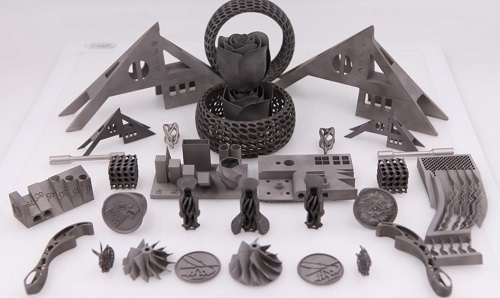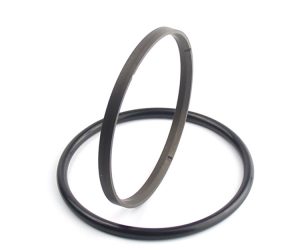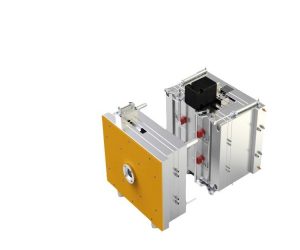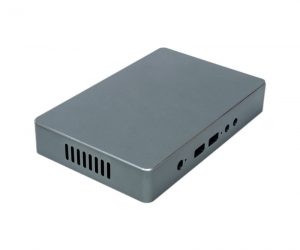1. Introduction: The Rise of Additive Manufacturing in Production
The manufacturing landscape is undergoing a transformative shift with the advent of 3D printing, also known as additive manufacturing. Unlike traditional subtractive methods that carve objects from raw materials, 3D printing constructs items layer by layer from digital models, unlocking unprecedented design freedom and production efficiency.Industry data underscores its rapid adoption: the global 3D printing market for manufacturing applications is projected to reach $52.3 billion by 2026, growing at a CAGR of 21.2% (SmarTech Analysis, 2024). From aerospace to healthcare, this technology is not just prototyping tools but revolutionizing end-to-end production processes. This article explores how 3D printing manufacturing processes are reshaping production, with a focus on technical advancements, industry applications, and future trends.
2. Core 3D Printing Technologies Transforming Production
2.1 Diverse Technologies for Diverse Needs
3D printing encompasses multiple technologies, each tailored to specific materials, precision, and scale. Here are some of the most prevalent ones:
| Technology | Working Principle | Material Compatibility | Precision (Layer Thickness) | Ideal for |
| Fused Deposition Modeling (FDM) | Melts thermoplastic filaments (PLA, ABS) and extrudes layer-by-layer. | Plastics, composites | 50–400μm | Prototyping, low-cost parts, DIY projects |
| Stereolithography (SLA) | UV light cures liquid resin into solid layers for high-detail models. | Resins, elastomers | 10–100μm | Medical prototypes, jewelry, intricate designs |
| Selective Laser Melting (SLM) | High-energy lasers melt metal powders (titanium, stainless steel) for dense parts. | Metal alloys | 20–100μm | Aerospace components, medical implants |
| Binder Jetting | Binder agents bond powder particles (metal, sand), sintered for large-scale parts. | Metals, ceramics, sand | 100–300μm | Automotive castings, sand molds |
2.2 The End - to - End Production Pipeline
The 3D printing production process is a well - defined pipeline that involves several key steps:
- Digital Design & Slicing: Engineers use CAD software (e.g., SolidWorks) to create 3D models, which are the digital blueprints of the physical objects to be printed. These models are then sliced into printable layers by tools like Cura. During the slicing process, parameters such as layer thickness and support structures are defined. For a complex mechanical part, the engineer might choose a relatively thin layer thickness of 50μm to ensure high precision, while for a large, less detailed prototype, a layer thickness of 200μm could be selected to speed up the printing process. Support structures are crucial for parts with overhangs or complex geometries, as they prevent the printed layers from collapsing during the build.
- Additive Fabrication: Printers deposit material according to the sliced data. Different printers operate at different speeds and precisions based on their technology. For example, an SLM machine building a titanium aerospace bracket might work at a layer thickness of 20μm, carefully melting and fusing metal powder layer by layer to create a dense and high - strength part. In contrast, an FDM printer constructing a plastic prototype could operate at 200μm layer thickness, extruding molten plastic filament rapidly to complete the build in a shorter time. The build speed can also be affected by factors such as the complexity of the part and the printer's hardware capabilities.
- Post - Processing: Finishing steps are essential to refine the quality of the printed parts. Sanding is often used to smooth the surfaces of SLA resin prints. For example, a raw SLA - printed object might have a surface roughness of Ra 20μm, but after sanding, this can be reduced to Ra 1μm, giving the part a much smoother and more aesthetically pleasing finish. Heat treatment is commonly applied to SLM - printed metal parts to enhance their durability. This process can improve the mechanical properties of the metal, such as increasing its tensile strength. Vapor smoothing is a popular post - processing technique for FDM - printed parts. By exposing the part to a chemical vapor, the surface of the plastic is melted slightly, resulting in a smoother and more uniform appearance.
3. Advantages Over Traditional Manufacturing
3.1 Unmatched Design Freedom
One of the most significant advantages of 3D printing is its ability to offer design freedom that far surpasses traditional manufacturing methods. Traditional manufacturing processes such as CNC machining and injection molding are often limited by the need for tool access and the complexity of the molds. In CNC machining, for Yigu Technology example, creating parts with internal cavities or complex lattice structures can be extremely challenging, if not impossible, due to the physical constraints of the cutting tools.
However, 3D printing eliminates these geometric constraints. It allows for the creation of highly complex structures that were previously unfeasible. A prime example of this is seen in the aerospace industry. Boeing has been using 3D printing to produce components for its aircraft, such as the titanium wing bracket in the Boeing 787. By using 3D printing technology, Boeing was able to design a lattice structure for the wing bracket. This innovative design reduced the weight of the bracket by 30% while maintaining its structural integrity. Such a design would have been impossible to achieve with traditional CNC machining techniques. The lattice structure, with its intricate network of interconnected struts, not only saves weight but also provides excellent strength - to - weight ratio, which is crucial for aircraft components to improve fuel efficiency and overall performance.
Customization is another area where 3D printing's design freedom shines. In traditional manufacturing, customizing products often involves high costs and long lead times, especially when producing small batches. For Yigu Technology instance, in the automotive industry, if a company wanted to produce personalized interior components for a limited - edition car model, the cost of creating new molds for injection molding would be prohibitively expensive. However, OECHSLER AG, a leading automotive supplier, has successfully utilized HP Multi Jet Fusion technology to produce over 1,000 personalized automotive interior components in just 3 days. Each component features unique textures and designs, tailored to the specific requirements of the customers. This process is 40% faster than traditional injection molding methods. The ability to quickly and cost - effectively produce customized parts allows companies to meet the growing demand for personalized products in the market, whether it's in the automotive, consumer electronics, or fashion industries.
3.2 Material Efficiency & Cost Savings
Material efficiency is a key advantage of 3D printing compared to traditional manufacturing. In traditional manufacturing processes like machining, a significant amount of material is wasted in the form of chips or scraps. For example, in metal machining, up to 30 - 70% of the raw material can be lost during the cutting and shaping processes. This not only increases the cost of materials but also has environmental implications.
In contrast, 3D printing is an additive process, which means it builds objects layer by layer, using only the necessary amount of material. The material waste in 3D printing is typically less than 5%, especially when using recyclable powder or filament materials. For Yigu Technology example, in FDM 3D printing, the unused plastic filament can be easily recycled and reused, further reducing waste. This high material efficiency not only reduces the cost of raw materials but also aligns with the growing trend towards sustainable manufacturing.
Cost savings in 3D printing extend beyond material efficiency. Traditional manufacturing often requires the creation of expensive molds, especially for processes like injection molding. The cost of a single mold can range from \(10,000 to \)50,000, depending on its complexity. This high upfront cost makes traditional manufacturing less viable for small - batch production or products with frequent design changes. In 3D printing, the cost of creating a digital model is relatively low, often just the cost of the software and the time of the designer. Once the digital model is created, it can be used to produce an unlimited number of parts without the need for additional mold - making costs. This makes 3D printing an attractive option for startups and small - to - medium - sized enterprises that may not have the financial resources to invest in expensive molds.
The time required for production is another factor where 3D printing offers significant advantages. Traditional manufacturing processes, especially those involving complex molds and multiple production steps, can take a long time. For Yigu Technology example, producing a new plastic part through injection molding may take 2 - 4 weeks, including the time for mold design, fabrication, and the actual production runs. In contrast, 3D printing can produce the same part in a much shorter time, typically within 24 - 72 hours, depending on the size and complexity of the part. This rapid production time allows companies to quickly bring products to market, respond to customer demands more efficiently, and reduce inventory costs by producing parts on - demand.
| Metric | 3D Printing | Traditional Manufacturing |
| Material Waste | <5% (recyclable powder/filament) | 30–70% (chips/scraps) |
| Mold - Making Costs | $0 (digital files only) | \(10k–\)50k per mold |
| Production Time | 24–72 hours | 2–4 weeks |
3.3 Scalability from Prototyping to Production
3D printing has revolutionized the prototyping process, allowing companies to quickly and cost - effectively create physical models of their designs. In the past, creating prototypes using traditional manufacturing methods was a time - consuming and expensive process. For Yigu Technology example, Apple used to take 8 weeks to design and produce a prototype of an iPhone case using traditional methods. This long lead time meant that the design team had to wait a significant amount of time to receive feedback on their designs, which could delay the entire product development cycle.
However, with the advent of 3D printing, Apple was able to cut the design cycle of the iPhone case from 8 weeks to just 10 days by using SLA - printed ABS prototypes. The ability to quickly produce prototypes allows companies to iterate on their designs more rapidly, incorporate user feedback earlier in the design process, and ultimately bring better - designed products to market faster. This is especially important in industries like consumer electronics, where product lifecycles are short, and innovation is key to staying competitive.
The scalability of 3D printing from prototyping to production is another significant advantage. General Electric (GE) has been a pioneer in using 3D printing for production - scale applications. GE produces 3D - printed fuel nozzles for the LEAP engines using Selective Laser Melting (SLM) technology. By using 3D printing, GE was able to reduce the part count of the fuel nozzle from 20 to just 1. This not only simplifies the manufacturing process but also improves the fuel efficiency of the engine by 15%. The ability to produce complex, high - performance parts on - demand using 3D printing allows GE to optimize its production processes, reduce inventory levels, and respond more quickly to changes in market demand.
In addition to aerospace, 3D printing's scalability is also being utilized in other industries such as healthcare. For example, in the production of customized orthopedic implants, 3D printing allows for the creation of patient - specific implants that fit perfectly into the patient's anatomy. These implants can be produced on - demand, reducing the need for large inventories of pre - made implants. This not only improves patient care but also reduces costs for healthcare providers. Whether it's in small - scale prototyping or large - scale production, 3D printing offers a level of flexibility and scalability that traditional manufacturing methods struggle to match.
4. Industry Transformations Driven by 3D Printing Processes
4.1 Aerospace & Defense: Lightweight, High-Performance Parts
The aerospace and defense industries are at the forefront of adopting 3D printing technologies to create lightweight, high - performance parts that are crucial for enhancing the efficiency and capabilities of aircraft and military equipment.
One of the remarkable applications is in the production of turbine blades. GE Aviation has been a pioneer in using Selective Laser Melting (SLM) to print Inconel 718 turbine blades. Inconel 718 is a nickel - based superalloy known for its excellent strength, corrosion resistance, and high - temperature performance, making it ideal for aerospace applications. These 3D - printed blades feature internal cooling channels that are intricately designed to optimize heat dissipation. Compared to traditional forging methods, the 3D - printed blades offer a 15% improvement in heat resistance. This enhanced heat resistance is crucial as it allows the engine to operate more efficiently at higher temperatures, improving fuel efficiency and reducing emissions. Additionally, the 3D printing process reduces material waste by a staggering 80%. In traditional forging, large amounts of material are removed through machining to create the final shape, resulting in significant waste. In contrast, 3D printing builds the part layer by layer, using only the necessary amount of material, which not only saves costs but also aligns with the industry's growing focus on sustainability.
In the defense sector, 3D printing is revolutionizing the way military equipment is repaired and maintained. Lockheed Martin, for Yigu Technology example, has successfully utilized Direct Energy Deposition (DED) to repair obsolete helicopter engine brackets. The traditional process of obtaining replacement parts for such obsolete components often involved long lead times, complex supply chains, and high costs. With DED, Lockheed Martin can now repair these brackets on - site. The lead time for obtaining a replacement bracket has been cut from 12 weeks to a mere 5 days. This rapid turnaround time is crucial for maintaining the operational readiness of military helicopters. Moreover, the company saves approximately $200,000 annually in inventory costs. By eliminating the need to stockpile large inventories of spare parts, Lockheed Martin can allocate its resources more efficiently, focusing on other critical aspects of defense operations.
4.2 Healthcare: Personalized Solutions at Scale
The healthcare industry is witnessing a paradigm shift with the integration of 3D printing, enabling the production of personalized medical solutions on a large scale.
Orthopedic implants are a prime example of how 3D printing is transforming healthcare. Stryker, a leading medical technology company, uses Selective Laser Melting (SLM) to fabricate patient - specific cobalt - chromium knee implants. These implants feature trabecular structures that mimic the natural bone structure, promoting better osseointegration, which is the process by which the implant fuses with the surrounding bone. Clinical studies have shown that these 3D - printed implants increase osseointegration by 30% compared to traditional implants. The implants are made from FDA - approved Ti - 6Al - 4V ELI, a titanium alloy known for its biocompatibility and mechanical properties. The ability to create patient - specific implants means that the implants can be customized to fit the unique anatomy of each patient, improving the success rate of joint replacement surgeries and enhancing the patient's quality of life.
Surgical guides are another area where 3D printing is making a significant impact. Johns Hopkins Hospital employs Stereolithography (SLA) - printed PEEK (polyetheretherketone) guides for neurosurgery. These guides are designed based on the patient's specific anatomy, obtained through medical imaging such as CT scans. In complex brain surgeries, achieving accurate tumor resection is crucial. The SLA - printed PEEK guides have enabled Johns Hopkins Hospital to achieve a remarkable 99% tumor resection accuracy, which is a 25% improvement over traditional methods. The precision of these guides allows surgeons to navigate the complex neural structures more accurately, reducing the risk of damage to healthy tissue and improving the overall outcome of the surgery.
4.3 Automotive: From Prototyping to End - Use Parts
In the automotive industry, 3D printing has evolved from being a tool for rapid prototyping to a technology for producing end - use parts, driving innovation and sustainability.
Rapid iteration is a key advantage of 3D printing in automotive design. Tesla, for instance, uses Fused Deposition Modeling (FDM) - printed ABS (acrylonitrile butadiene styrene) models to reduce the component validation time by 70%. In the development of electric vehicle components, where innovation is rapid and design changes are frequent, this reduction in validation time is invaluable. Engineers can quickly print prototypes of new components, test them, and make design tweaks based on the test results. This iterative process allows Tesla to bring new and improved electric vehicle components to market faster, giving them a competitive edge in the rapidly evolving automotive market.
Sustainability is becoming an increasingly important factor in the automotive industry, and 3D printing is playing a role in this regard. BMW uses recycled nylon via Selective Laser Sintering (SLS) for 3D - printed interior parts. These parts not only meet the high - quality standards required for automotive interiors but also contribute to a 25% reduction in the carbon footprint compared to injection - molded alternatives. The use of recycled materials reduces the demand for virgin materials, conserving resources and reducing environmental impact. Additionally, the 3D - printed parts made from recycled nylon achieve a tensile strength of 85 MPa, which is sufficient for their intended use in automotive interiors. This shows that 3D printing can produce sustainable end - use parts without sacrificing performance, making it an attractive option for automotive manufacturers looking to reduce their environmental impact while maintaining product quality.
8. Conclusion
3D printing manufacturing processes are not just enhancing production—they’re redefining it. By enabling design freedom, material efficiency, and rapid iteration, they empower industries to solve complex challenges, from lightweight aerospace components to personalized medical devices. As technology advances—with AI, sustainable materials, and hybrid manufacturing—the future of production lies in additive techniques that blend precision, creativity, and scalability. The era of “what can be made” is limited only by the boundaries of digital imagination.





